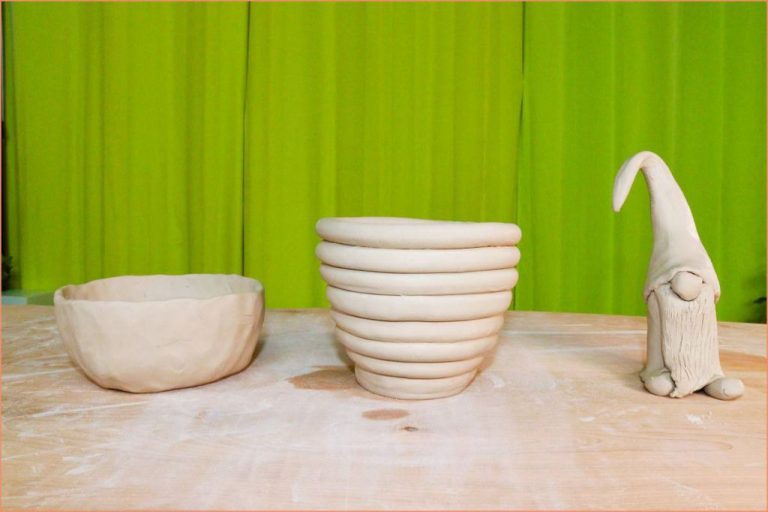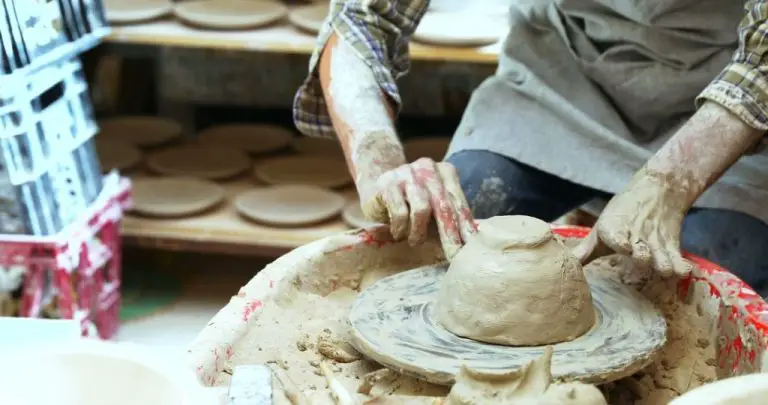Why Wont My Clay Whistle Work?
Clay whistles are a fun and creative way to make your own musical instrument. The basic design is simple – a hollow tube with a mouthpiece opening on one end and a whistle opening on the other. When you blow into the mouthpiece, your breath travels through the tube and exits the whistle opening, creating a sharp, high-pitched tone.
While clay whistles seem straightforward, many beginners find that their homemade whistles don’t actually work. A whistle needs to be carefully constructed to produce sound. There are some common issues that can prevent a clay whistle from working properly, including cracks, improper firing, poor lip placement, and blocked airways. With attention to design and technique, you can troubleshoot problems and get your clay whistle to play a tune.
Checking the Design of the Clay Whistle
The design and geometry of a clay whistle is crucial for producing sound. The size, shape, and placement of the whistle’s airway openings will impact whether the whistle can produce a tone or not. Let’s discuss some key design considerations:
Size: The whistle chamber that air passes through needs to be an appropriate size to allow vibration and resonance of air. Extremely large or small whistle chambers may not vibrate air correctly to produce sound. Test different chamber sizes when designing the whistle shape.
Shape: The shape of the whistle chamber can impact resonance and sound production. Round, spherical, or rectangular shapes tend to work best. Irregular shapes may inhibit the airflow and vibrations required to produce sound.
Hole Placement: The position of the whistle’s airway openings is crucial. The blow hole where air enters and the tone hole where sound resonates out must be properly spaced apart to create whistling. Having holes too close together or far apart inhibits proper air circulation and whistle tone.
Getting the right design, size, shape and hole placement is imperative for a clay whistle to produce a good tone. Experiment with different configurations and test each one to achieve the best whistle design.
Using the Proper Clay
The type of clay you use to make your whistle can greatly impact its durability and sound quality. For whistles, an earthenware or stoneware clay that fires to a hard state is recommended. Stay away from low-fire clays as they may not get hard enough and can flake or crack when blown into. Porcelain can also work but may be prone to cracking during drying and firing due to its lower plasticity. The clay body should be dense enough when fired to produce a clear tone without sounding dull or muted.
A clay with moderate grog or filler content can help strengthen the whistle and reduce warping or cracking. However, too much filler can deaden the sound. Try testing different clay bodies to find one that fires hard, remains durable under force, and produces a pleasing, carrying tone.
Be aware that highly plastic, sticky clays can deform more easily when blown into while less plastic clays may not hold their shape as well. Finding the right balance of plasticity and strength for your clay recipe can take some trial and error. Test different combinations until you find a clay that both forms well and fires to a strong, resonant ceramic.
Avoiding Cracks and Imperfections
One of the most common reasons a homemade clay whistle won’t work properly is cracks and imperfections in the clay. As the clay dries and is fired, small cracks and holes can form in the structure. These cracks impact the airflow and disrupt the sound the whistle produces.
There are a few key steps you can take to avoid cracks when making a clay whistle:
- Make sure the clay is kneaded thoroughly and all air bubbles are removed before sculpting your whistle. Air pockets create weak points that can crack.
- Allow thick parts of the whistle to dry slowly to prevent cracking, keeping them wrapped in plastic while thinner areas air dry.
- Avoid handling the whistle excessively or bending thin parts before thorough drying.
- Fire the whistle at the optimal temperature and ramp speed for the clay type to prevent cracking from improper firing.
- If glazing, ensure the glaze and clay have similar shrinkage rates and the glaze is applied smoothly in an even coat.
Take the time to carefully sculpt, dry, and fire your homemade whistle to avoid any small cracks or holes. This will create a strong whistle structure capable of producing a clear tone when you blow into it.
Firing Temperature
Proper firing temperature is critical for creating a functioning clay whistle. If the whistle is underfired, the clay will not vitrify completely, leaving the material porous and prone to cracking. An underfired whistle will likely be too soft and brittle to produce a clear tone.
On the flip side, overfiring can lead to deformation or bloating as gases expand in the clay body. An overfired whistle risks melting out of shape or forming micro-cracks that disrupt the airflow and tone production. Additionally, overfiring can create a hardened, glassy surface that prevents proper wetting of the whistles’ rim.
The ideal firing temperature depends on the type of clay used, but typically falls in the range of 1900°F-2200°F for cone 04-6 clays. Carefully follow the clay manufacturer’s recommended firing guidance to achieve the proper bisque hardness. Test rings made from scraps can indicate if the kiln fire fully vitrified the clay without overheating it.
Use a kiln sitter, cones, or pyrometer to monitor the temperature and avoid under or overfiring. Adjustments to the firing time, kiln placement, and ventilation can help fine-tune the results. With a properly fired clay whistle, the tone quality will be optimized.
Glazing Issues
One common reason clay whistles fail to work properly is due to glaze clogging the airway openings. Glazes applied too heavily or allowed to pool in the whistle’s mouthpiece can block the passage of air, preventing the whistle from producing sound.
To avoid this, use a light hand when glazing a clay whistle. Focus glaze only on the exterior surface, avoiding the whistle’s openings. Handle the piece carefully while glazing so excess glaze does not seep and clog the interior air channels. Use a soft brush to neatly define glaze edges and prevent pooling near openings.
Firing glazed whistles on stilts or small ceramic pieces can also help prevent glaze from sealing off interior airways. The stilts raise the whistle so glaze can fully run off openings during firing. Just be sure to place stilts so they don’t block any air channels themselves.
Always test glazed whistles thoroughly before final firing. Blow through each opening to ensure air flows freely. If glaze has begun sealing any airways, carefully remove it with a thin instrument like a needle tool before proceeding with firing. With proper glaze application and testing, you can avoid whistle failure due to clogged air passages.
Whistle Size and Shape
The size and shape of your clay whistle can significantly impact the sound it produces. A whistle’s tone is related to the size of its internal chamber – a larger chamber will create a lower tone while a smaller one makes a higher pitch. The shape also affects resonance. A perfectly round body may produce a more muted, breathy whistle while an elongated or cylindrical shape can amplify and carry the sound further.
Consider your desired tone when forming the clay. For a high bird-call type sound, a small spherical whistle is best. For lower foghorn-style tones, make a larger cylindrical chamber. The whistle’s opening also impacts tone – a wider opening gives a fuller sound while a smaller lip opening makes a sharper, piercing tone. Experiment with different shapes and sizes to achieve your ideal whistle pitch and resonance before firing.
Proper Lip Placement
The lip is one of the most critical parts of a clay whistle that impacts its ability to produce a sound. The lip is the narrow opening at the top of the whistle where air passes through to create the whistling noise. There are a few key factors about the lip shape and size that determine whether the whistle will work properly:
Lip Thickness – The lip should be relatively thin, around 1-3mm thick. If the lip is too thick, it will impede the airflow too much and not allow the whistle to produce a tone. The air needs to be able to pass smoothly through the narrow opening.
Lip Smoothness – Any cracks, bumps or irregularities along the lip can disrupt the airflow and cause the whistle not to work. The lip needs to have a very smooth surface all the way around the opening.
Lip Shape – The lip should form an oval or slit-like shape rather than a circle. This shape focuses and directs the airflow properly to produce the whistling tone. A circular opening may be too wide and diffuse for a clear tone.
Lip Angle – The lip should angle slightly outward, not be perpendicular to the chamber of the whistle. This angled position helps direct the air over the lip smoothly to start the vibrations that generate the tone.
Paying close attention to the lip area when constructing a clay whistle is crucial. The right size, shape and smoothness will ensure proper airflow and whistling ability. This is often the most delicate area of the whistle to get right.
Airflow Obstructions
One common reason for a clay whistle not to work properly is obstructions in the airway that prevent smooth airflow. The air passage in the whistle needs to be completely clear and unblocked for the whistle to produce a sound.
Any debris, dried clay, or imperfections left inside the air chamber or mouthpiece of the whistle during construction can cause disruptions in the airflow. Even tiny bumps or cracks on the inside walls of the airway can hinder the whistle’s ability to work.
Carefully inspect the inside of the whistle after construction to ensure there are no leftover bits of clay or other blockages. Use a wire or needle tool to clear out any obstructions if found. Firing and glazing should not introduce new obstructions if the clay whistle had a fully cleared airway beforehand.
The entire internal chamber and mouthpiece need a smooth surface for air to flow without disruption. Airflow over a bump or crack creates turbulence that interrupts the whistling effect. Ensuring a fully cleared internal airway is key for proper whistling.
Conclusion
There are a few key factors that determine whether a clay whistle will function properly and produce sound. First, ensure the whistle design is appropriate, with the right size and shape, including a properly formed lip opening. Avoid cracks, imperfections in the clay, and obstructions in the airway like glaze drips or debris.
Use high quality clay that fires at the proper temperature according to the clay specifications. Underfiring can result in weak spots while overfiring can cause cracking. Apply an even glaze layer without puddling or drying drips if glazing. Finally, ensure no obstructions block the airflow once the whistle is completed, so air can flow smoothly across the lip opening.
By carefully controlling these elements – the clay quality, the firing, the design, and the final glaze application – you can successfully create a functional clay whistle that produces sound through airflow across its opening.



